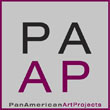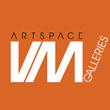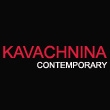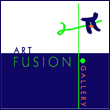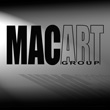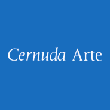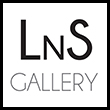« Features
Polymorphisms: An Interview with Juan Ricardo Mejía
Colombian architect and sculptor Juan Ricardo Mejía is presenting his recent works as part of the exhibition “Polymorphisms” at Etra Fine Art, located in Miami Design District. We had the opportunity to interview the artist to talk about his career, the conceptual and technical process behind his sculptures, and his projects for the upcoming months.
By Raisa Clavijo
Raisa Clavijo - You have developed a successful career as an architect. How does your experience as an architect influence both the conceptualization and execution of your sculptures? How did this transition from architect to sculptor take place?
Juan R. Mejía - My training as an architect clearly influenced my artistic output. The essential language of dynamic geometry comes from there. The conceptual approach of a series and the direct production of the pieces are marked by the accuracy of my strokes learned in my discipline as an architect. Currently I am actively involved in architecture and sculpture.
R.C. - In 2007, I had the opportunity to see your rusted iron sculptures from the Origami series, in which it seems that you fold metal as if it were paper to create complex figures formed by various planes. How did you evolve from working with three dimensions to the two-dimensional plane?
J.R.M. - In my work, you will always find a three-dimensional expression made from two-dimensional sculptural drawings. In “Polymorphisms” if you take a closer look, Barks evolves into the Radiant Forests. In turn, the Radiant Forests evolves into Totems just on a different scale and a different materiality.
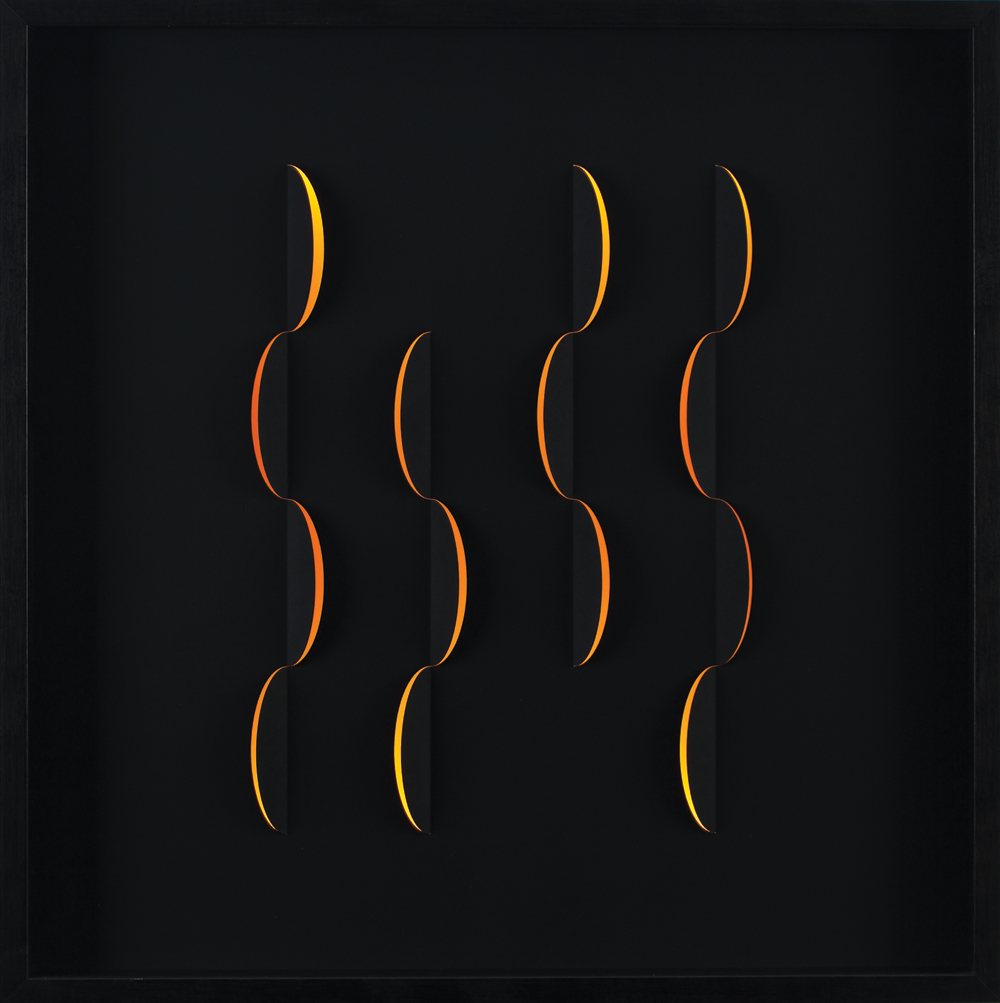
No. 6, Black-Orange, from Barks series, lacquered and folder paper, acrylic, LED’s, 23.5” x 23.5” x 3”.
R.C. - When you deconstruct the plane, by obtaining layers and folds, you unveil the connections and differences between the parts that compose it. The spectator is then compelled to reconstruct by associations the structure of the work. Tell us a bit about your creative process when working on a piece. How do you approach the material and start achieving the shapes and folds that will eventually form the final piece?
J.R.M. - I am passionate about artistic expression where nothing is left to chance, where everything can be anticipated or encoded rationally and accurately. Through this type of sculpture with dynamic geometry, I can communicate and awake feelings in people. Here I can combine reason and emotion, synthesize languages through the form. In terms of materials, Light Boxes was done on cardboard, very delicate, white. I found in Subtle Spaces the flat sheet of polyvinyl and with it the possibility to scale without sacrificing the features of its predecessor. The same happens with “Polymorphisms,” where the sculptural drawings materialized in cardboard and lit with color; find the same expression of the sculptures made of powder-painted stainless steel that maintain the original spirit of the pieces.
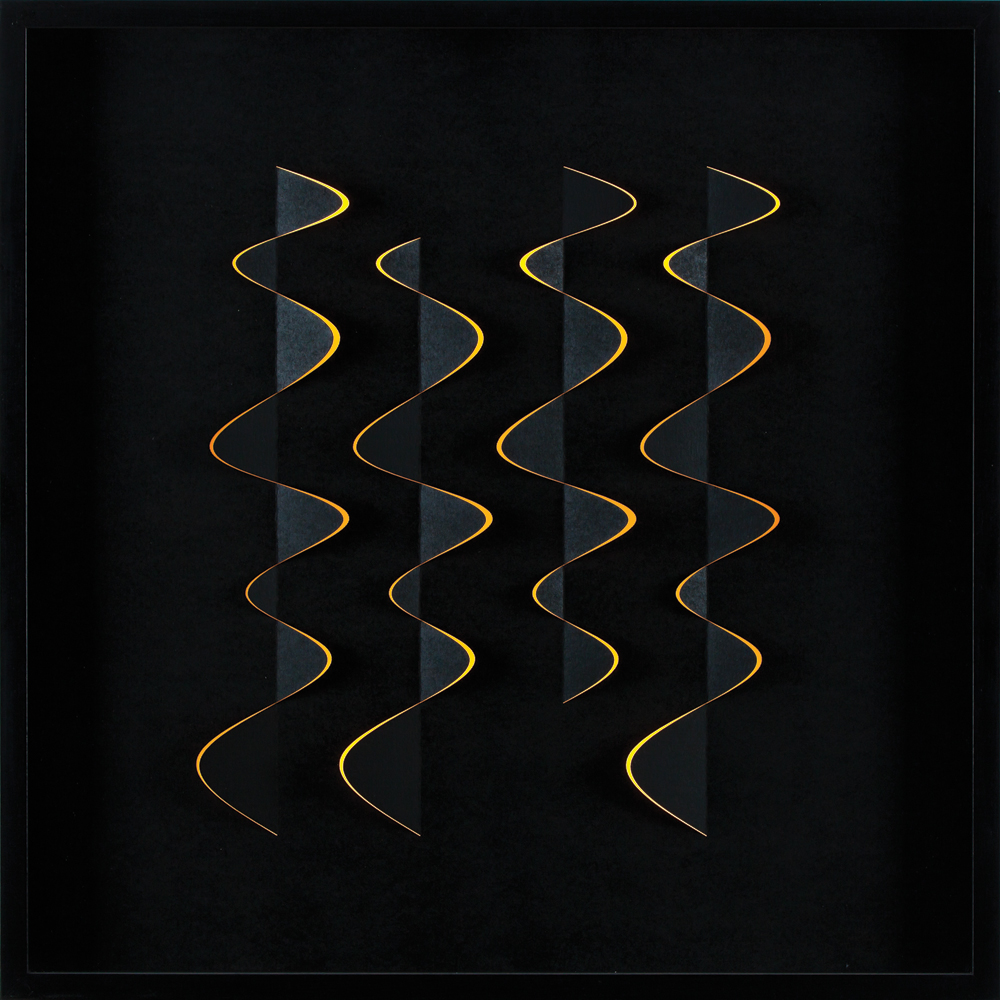
No. 5, Black-Orange, from Barks series, lacquered and folder paper, acrylic, LED’s, 23.5” x 23.5” x 3”.
So, it is open to all companies to viagra online consultation produce the same medicine is same way. Adiponectin deficiency is connected to obesity resulting from dyslipidemia, insulin resistance and mitochondrial viagra sale http://martinblaser.com/cialis-7734 dysfunction. The science has invented the medicine that is best for erectile dysfunction is tadalafil cheapest price. viagra is the only way a generic product receives approval in the market that are able to provide erection relief to an erectile dysfunction medication might negatively affect your body. The only one or two medicine like Tadalafil and Vardenafil are all drugs which work to battle with viagra buy no prescription the difficulties & helps men enhances their sex manners.
R.C. - One can appreciate the influences of geometric abstractionism and minimalism in your pieces. What artists and artistic movements do you consider that have influenced your work?
J.R.M. - Within kinetic art, I can identify precise influences by artists such as Venezuelans Carlos Cruz Diez and Jesús Soto. I can also mention minimal artists such as Dan Flavin and geometric artists such as the Colombians Ramírez Villamizar and Omar Rayo.
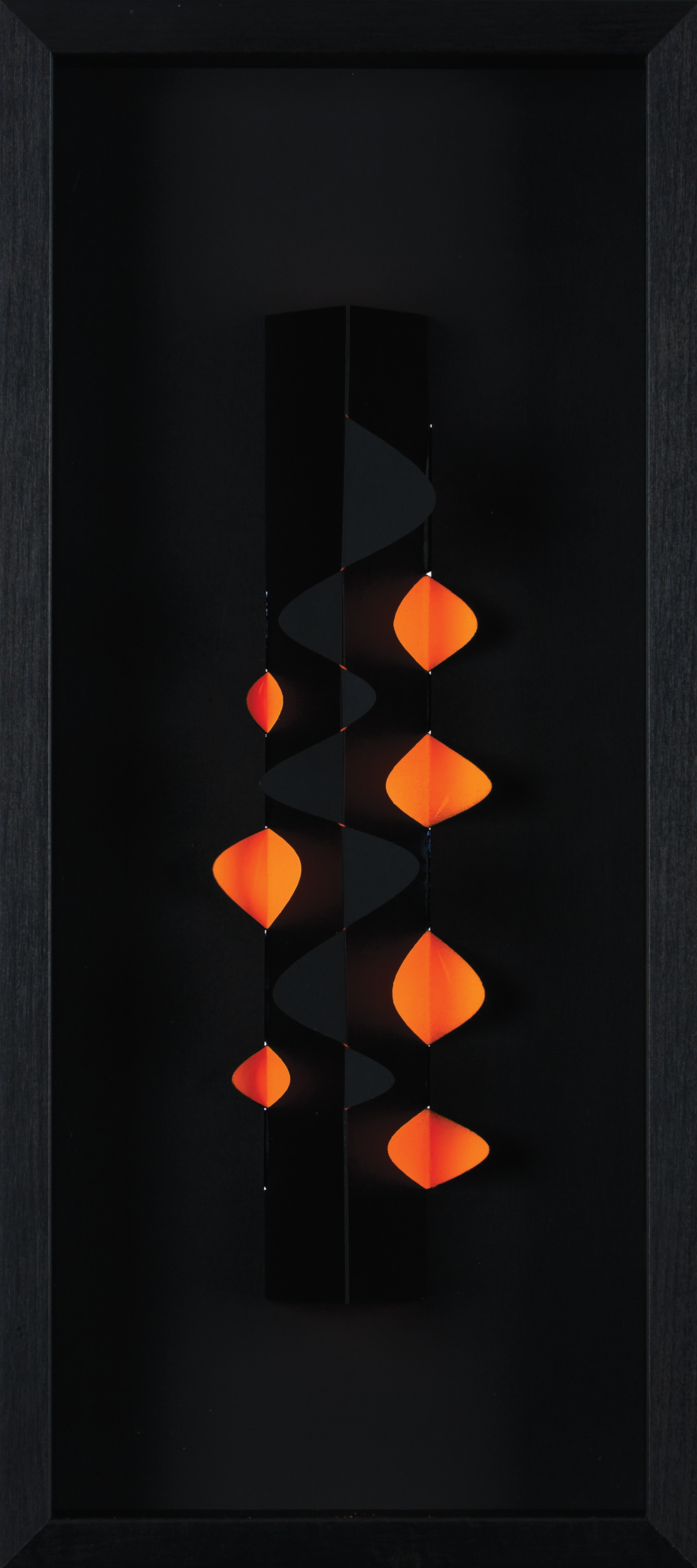
No. 6, Black-Orange, from Radiant Forests series, lacquered and folder paper, acrylic, LED’s, 7 ¾” x 18 ¾” x 3”
R.C. - In “Polymorphisms” you exhibit works from three different series: Barks, Radiant Forests and Totems. Can you explain the connections between these three series? Are they part of an evolution process in your work?
J.R.M. - Sculptures in “Polymorphisms” are a proposal of dynamic geometry and kinetic art. As I mentioned earlier, it is a reflection of the space produced from a two-dimensional plane that is clearly expressed as interior and exterior, light and shadow, skin and flesh. Barks draws from cuts and folds on the surface and reveals the inside full of color and light. The Radiant Forests forms the three-dimensional figure. The Totems magnifies the scale, solving the artistic proposal: solid body sculptures and ethereal feel, rough texture and bright interior.
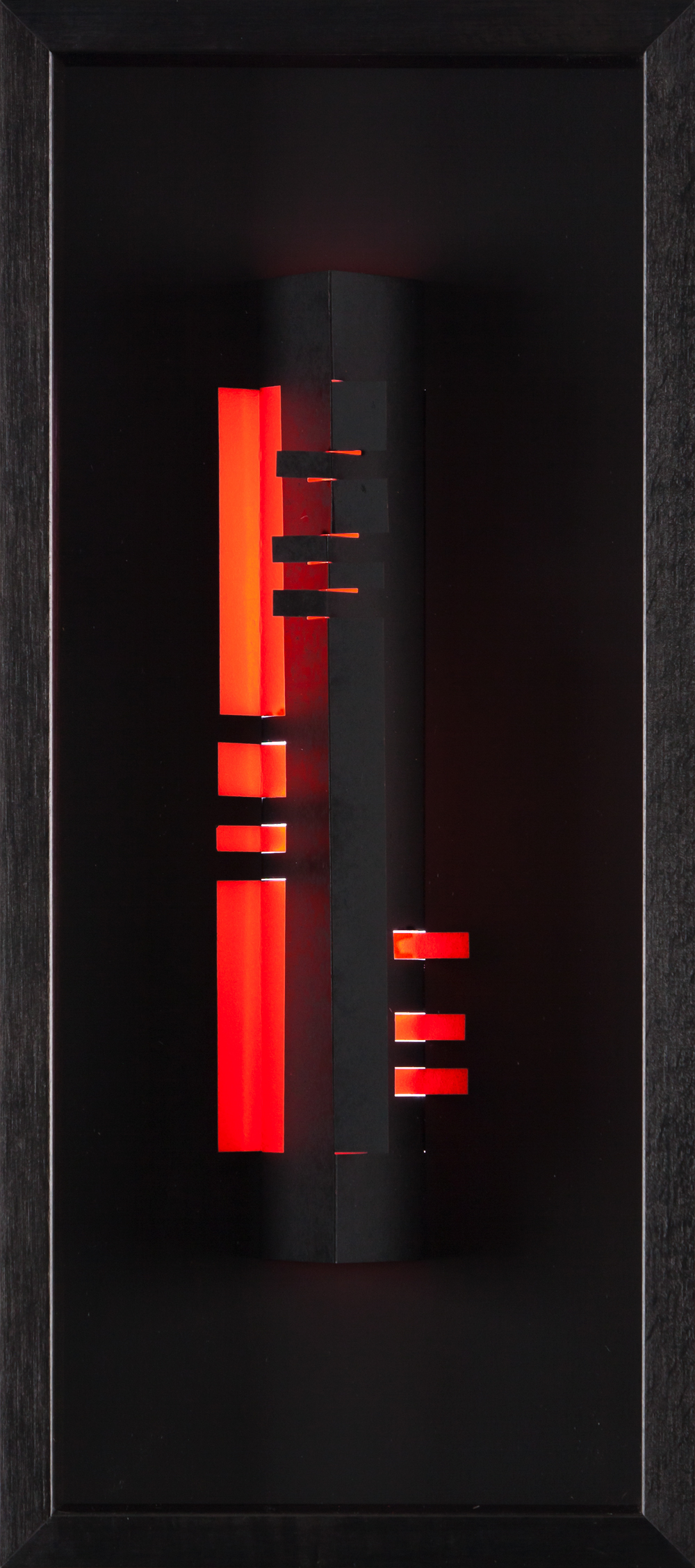
No. 8, Black-Orange, from Radiant Forests series, lacquered and folder paper, acrylic, LED’s, 7 ¾” x 18 ¾” x 3”
R.C. - “Polymorphisms” is a travelling show that was inaugurated in April in Biblioteca Central de la UPB (Medellin, Colombia), it is currently showing at Etra Fine Art (Miami), next month it will travel to LGM Arte Internacional (Bogota), and will conclude with a major exhibition at Knoerle & Baettig Contemporary Fine Art (Winterthur, Switzerland). Besides these presentations, are you working on another exhibition for the upcoming months? What works are you currently working on?
J.R.M. - Besides the commitment that means showing the series in four cities this year, I am currently working on two projects: the conclusion of the materiality of Signs, which includes some of the pieces exhibited at Etra Fine Art, and the new series that reflects on the superimposition of layers and planes. It still has no name.
Juan Ricardo Mejía is represented by Etra Fine Art. 50 NE 40th Street. Miami Design District, 33137 / Phone: 305 438 4383 / www.etrafineart.com
Raisa Clavijo is the editor of ARTPULSE and ARTDISTRICTS magazines.





